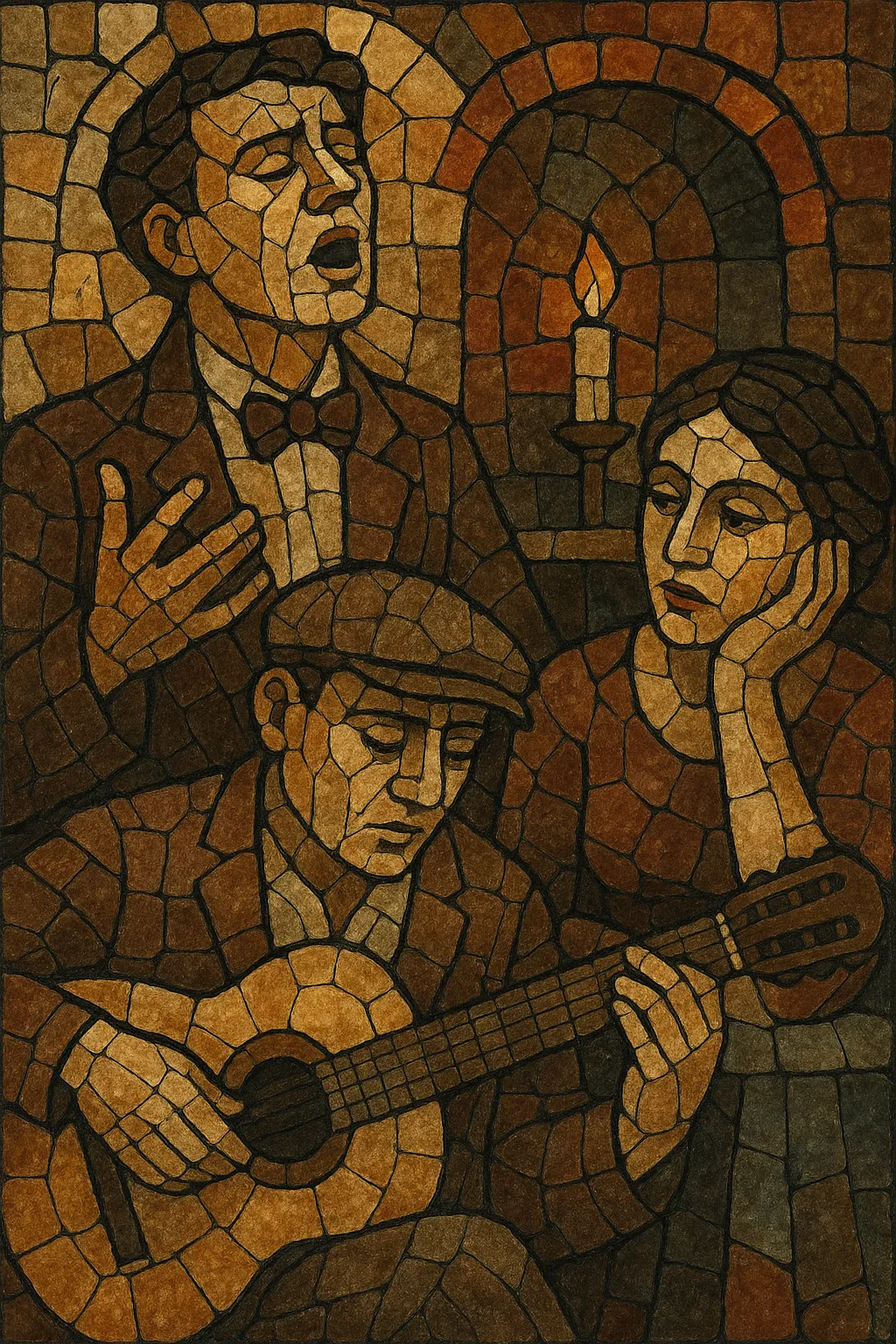Kleinkunst is a German-language small‑stage tradition that blends song, satire, spoken word, and short theatrical sketches. It thrives in intimate venues where the performer’s personality, wordplay, and timing matter as much as the music itself.
Musically, it often features voice accompanied by piano or guitar, drawing on waltz, tango, foxtrot, and light classical or cabaret harmonies. Lyrically, it ranges from witty and whimsical to pointed political commentary, frequently employing regional dialects and sharp social observation.
Closely related to German Kabarett and the Liedermacher singer‑songwriter movement, Kleinkunst serves as an umbrella for concise, literate, and performance‑driven pieces designed for direct connection with an audience.
Kleinkunst emerged in the German‑speaking world in the early 20th century as the small‑stage counterpart to French cabaret. Early Berlin and Vienna revues and salons fused satirical monologues, couplet‑style songs, and short skits, performed in intimate rooms where audience and artist interacted closely. The idiom borrowed the patter‑song wit of music hall and vaudeville, while keeping the melodic and textual sophistication of the German Lied tradition.
During the Weimar era, small stages and cabaret rooms became crucibles for social critique and urbane humor. Performers crafted strophic songs with memorable refrains and biting lyrics. Political repression in the 1930s curtailed many venues; some artists went into exile, preserving the small‑stage ethos abroad while reinforcing its associations with satire and resistance.
After World War II, Kleinkunst re‑established itself across Germany, Austria, and Switzerland. New ensembles and soloists blended piano‑backed chanson with observational comedy and regional dialect humor. The period saw an increasing overlap with the Liedermacher singer‑songwriter wave, as artists brought more personal storytelling and acoustic guitar to the small stage, retaining the genre’s trademark intimacy and verbal dexterity.
Kleinkunst remains a living stage culture supported by dedicated clubs, festivals, and prizes. Modern acts mix musical cabaret, stand‑up, poetry, and multimedia, yet still prioritize articulate lyrics, clear dramaturgy, and close audience rapport. The genre now functions as a bridge among cabaret, singer‑songwriting, spoken word, and comedy, sustaining its role as a laboratory for sharp, compact performance pieces.
Aim for intimate, text‑forward pieces that balance melody with storytelling, satire, and character. Write with the stage in mind—pace, gesture, and timing are part of the composition.


